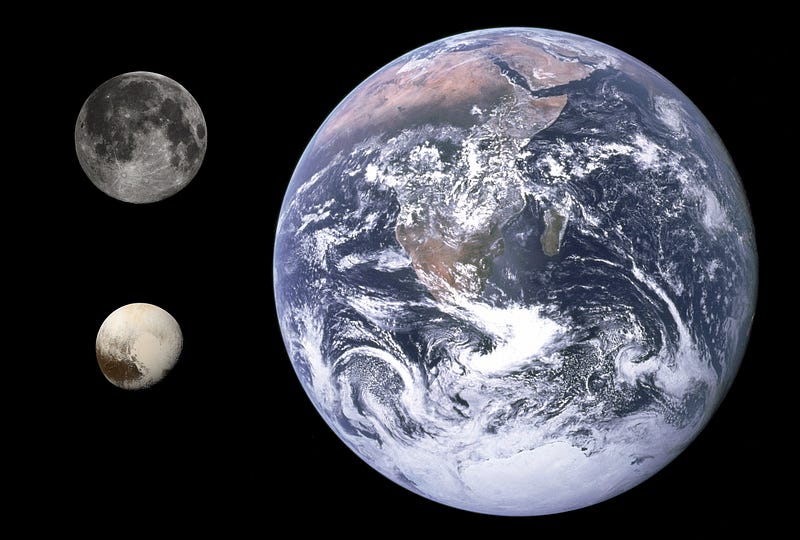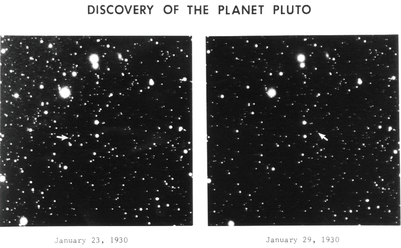Revisiting Pluto's Planetary Status: The Ongoing Debate
Written on
Chapter 1: The Pluto Controversy
The question of whether Pluto deserves the title of planet continues to spark interest and debate, particularly as we revisit its classification in 2022.
“To be or not to be a planet”—this phrase encapsulates the ongoing discussions surrounding Pluto, the cherished former ninth planet in our Solar System.
As an educator focused on STEM subjects, especially astronomy, questions about Pluto frequently arise. I can understand why: Pluto was designated a dwarf planet in 2006, which baffled many—teachers, parents, students, and the general public alike.
Why was Pluto "demoted"? How could scientists change a classification so fundamental? Did Pluto commit some cosmic faux pas? And what about that handy mnemonic for remembering the planets?
Recently, there has been a resurgence in discussions about Pluto potentially regaining its planetary status. What are the current views? Is Pluto a planet, or is it not? The scientific community seems divided.
To answer these questions, we must delve into Pluto’s history and the complexities that have defined it.
Section 1.1: Pluto’s Discovery
Discovered in 1930, Pluto’s late arrival to our astronomical knowledge can be attributed to its diminutive size and extreme distance from Earth.
Measuring just 1/6 the size of Earth, Pluto is roughly half the width of the contiguous United States. If you were to travel from one coast to the heart of America, you would cover approximately the same distance as it would take to cross Pluto.

Additionally, Pluto resides an average of 3.6 billion miles from the Sun, making it 39 times farther away than Earth. This small size and great distance make Pluto difficult to observe from Earth.
Since Neptune was discovered in 1846, astronomers had speculated about a planet even farther out. Anomalies in Uranus’s orbit suggested the presence of a celestial body with sufficient gravitational pull to influence it. Thus began the search for the elusive "Planet X."
Percival Lowell introduced the concept of this theoretical planet in 1903, dedicating years to its pursuit. Despite publishing predicted locations in 1915, he died a year later, leaving his work unfinished. However, his nephew continued the search, leading to Clyde Tombaugh's discovery of Pluto on February 18, 1930.
Still, Pluto remained elusive, barely appearing as a speck on the photographic plates used at the time.

Accepted by the International Astronomical Union (IAU) as a planet, the name "Pluto" was suggested by an 11-year-old girl named Venetia Burney. She chose the name of the Roman god of the underworld, which also fortuitously incorporated the initials of Percival Lowell.
Section 1.2: The Shift in Classification
As time passed, new data raised more questions about Pluto. Science thrives on inquiry, and Pluto’s peculiarities were just the beginning.
Pluto’s orbit differs significantly from those of other planets. While most planets have nearly circular orbits aligned on a similar plane, Pluto’s orbit is elliptical and tilted at a steep angle. This unusual path means that at times, Pluto is closer to the Sun than Neptune.
Further studies revealed that Pluto was too small to account for the gravitational effects observed on Uranus's orbit, prompting a renewed search for a larger "Planet X" in the Kuiper Belt.
Interestingly, the discovery of numerous other celestial bodies similar to Pluto in the Kuiper Belt led to a reconsideration of what constitutes a planet. If Pluto is classified as a planet, then countless other Trans-Neptunian Objects (TNOs) would also qualify.
This realization prompted scientists to examine the criteria for planet classification. The IAU ultimately established three key criteria: 1. The object must be spherical. 2. It must orbit the Sun (not another body). 3. It should exert enough gravitational influence to clear its orbital path.
While Pluto meets the first two criteria, its frequent interactions within the Kuiper Belt disqualify it from the third. Consequently, in 2006, the IAU reclassified Pluto as a dwarf planet, along with other Kuiper Belt objects.
This decision was met with public discontent, as many had grown attached to Pluto’s status as the ninth planet over the decades.
Chapter 2: The Ongoing Debate
In late 2021 and early 2022, news surfaced from a group of researchers arguing that the IAU's 2006 decision was made too hastily. They suggested reverting to a 16th-century definition of a planet: “any geologically active bodies in space.”
Paul Byrne of North Carolina State University commented on the implications of Pluto’s reclassification, stating that it led to a narrow understanding of planets as few and unique, rather than a more inclusive classification.
This broader definition could potentially include over 150 objects, such as geologically active moons like Europa and Titan, but it also raises questions about exoplanets, whose geological activity is often unknown.
These researchers are advocating for Pluto and similar bodies to be recognized as planets again, calling for a revision of the IAU's previous decision.
As an educator, I believe the classification of dwarf planets serves to simplify our understanding of the Solar System for learners. It allows us to teach the established eight planets more effectively without overwhelming students with a lengthy list of celestial bodies.
Moreover, Pluto’s unique characteristics—its unusual orbit and interactions with other Kuiper Belt objects—merit its classification as something distinct. This doesn't diminish its value as an astronomical subject; rather, it highlights the complexity of our Solar System.
The narrative surrounding Pluto’s classification is a vivid example of the scientific process—how knowledge evolves with new discoveries.
Our understanding of the universe has changed dramatically since 1930, and we must adapt our definitions to reflect our current knowledge rather than reverting to outdated concepts.
I don’t claim to have all the answers regarding these cosmic entities. However, I know that when I explain why Pluto is classified as a dwarf planet, people, including children, grasp the concept—even if they don't fully accept it.
This ongoing discussion about Pluto serves as a valuable opportunity for science communication and education, rather than a contentious issue.
What are your thoughts? Feel free to share your opinions and engage in a discussion about this beloved celestial body, Pluto.